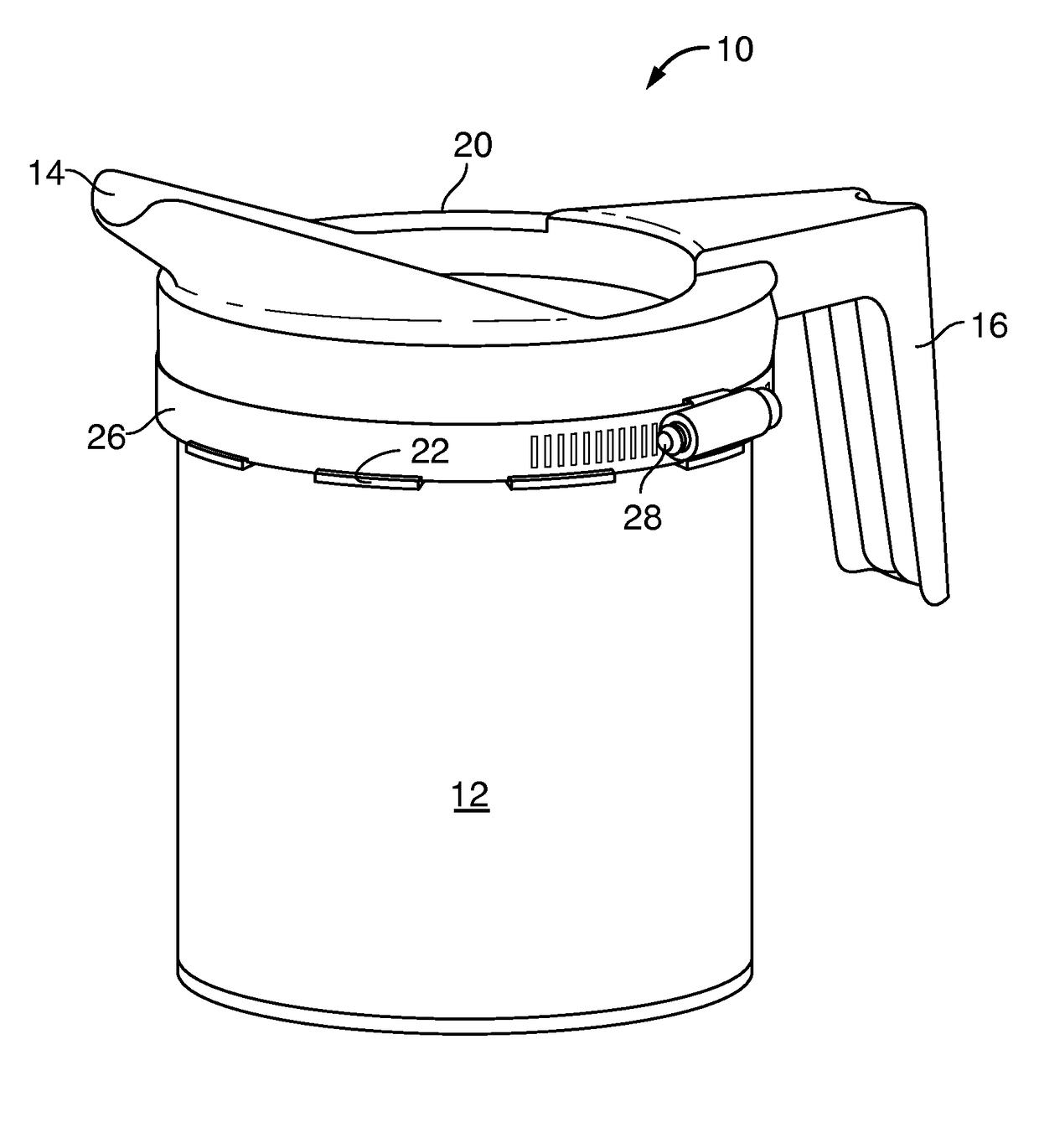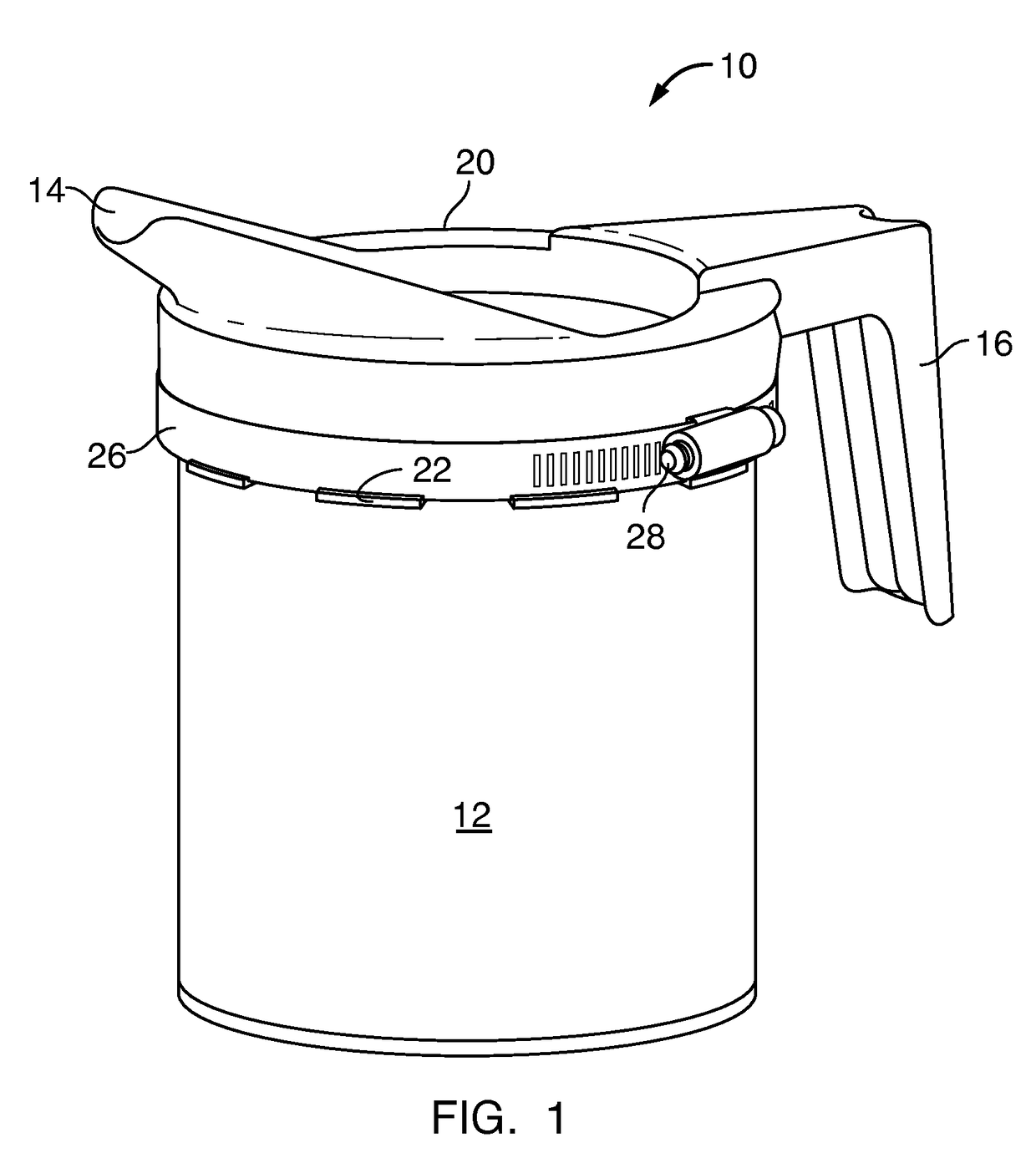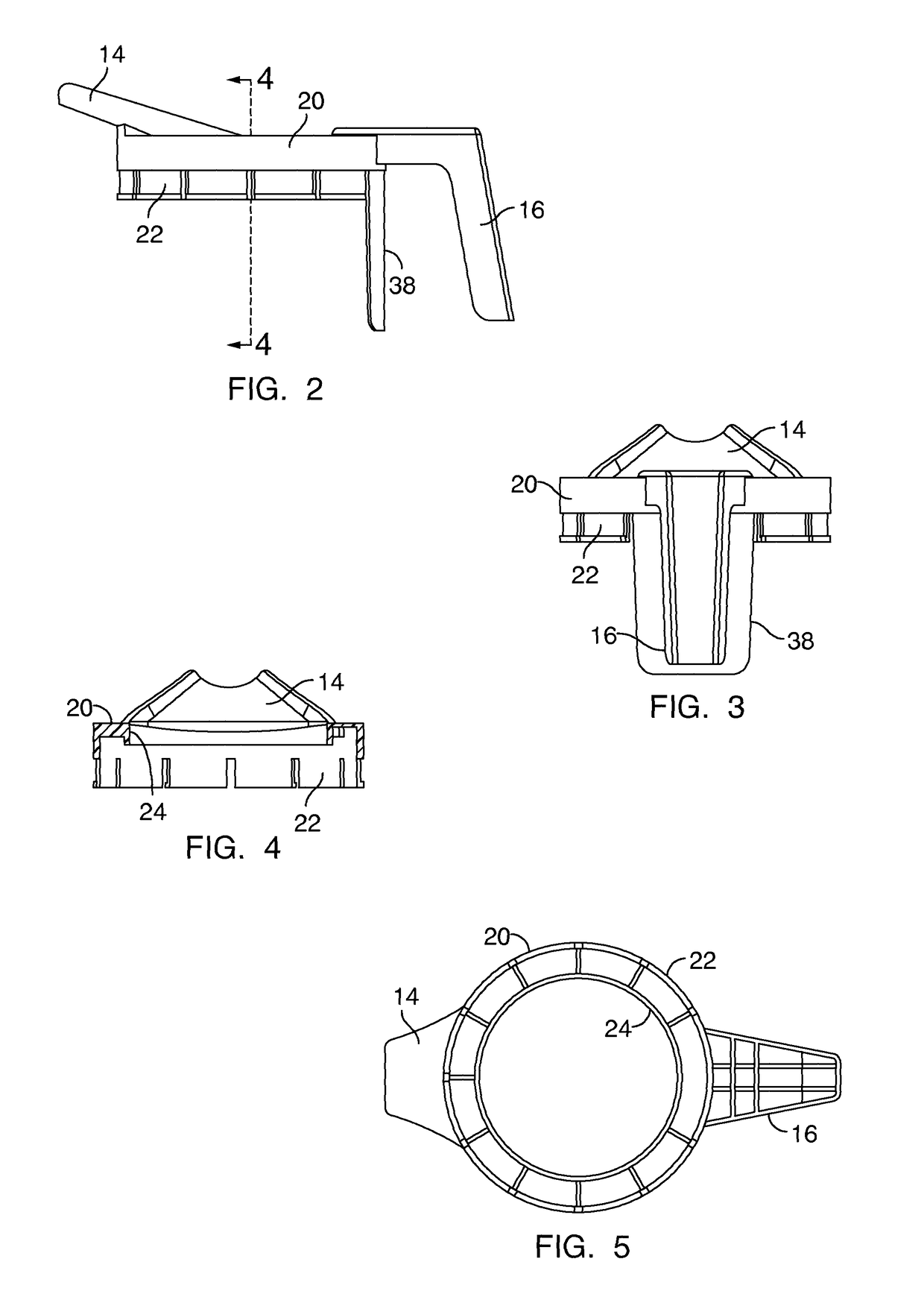Crack sealer product and method
a crack sealer and product technology, applied in the field of crack sealer products and methods, can solve the problems of complex and costly equipment, cracks in asphalt and concrete driveways, and poor satisfaction of melters
- Summary
- Abstract
- Description
- Claims
- Application Information
AI Technical Summary
Benefits of technology
Problems solved by technology
Method used
Image
Examples
Embodiment Construction
[0022]FIG. 1 illustrates the crack sealer product 10 comprised basically of a metal can 12, and a removable spout 14 with an integral handle 16. The metal can contains an asphalt tar sealant 18 illustrated in FIGS. 6 and 7. The sealant is the same asphalt tar sealant used by professionals for crack sealing with the aid of melters in which chunks of the sealant are heated and converted to a hot fluid state and then pumped through a hose and wand to the cracks to be sealed.
[0023]As shown in FIGS. 2-5 the spout 14 and integral handle 16 can be molded from a high temperature polymer plastic impregnated with a glass or carbon fiber, for example, 30% fiber by volume, or a thermosetting phenolic formaldehyde resin, such as Bakelite. Such materials are poor conductors of heat, and are heat resistant and capable of withstanding temperatures above 275° F. at which the asphalt tar sealant melts and assumes a fluid state. The spout 14 and handle 16 are connected to opposite sides of a ring 20 w...
PUM
| Property | Measurement | Unit |
|---|---|---|
| temperature | aaaaa | aaaaa |
| temperatures | aaaaa | aaaaa |
| temperature | aaaaa | aaaaa |
Abstract
Description
Claims
Application Information
 Login to View More
Login to View More - R&D
- Intellectual Property
- Life Sciences
- Materials
- Tech Scout
- Unparalleled Data Quality
- Higher Quality Content
- 60% Fewer Hallucinations
Browse by: Latest US Patents, China's latest patents, Technical Efficacy Thesaurus, Application Domain, Technology Topic, Popular Technical Reports.
© 2025 PatSnap. All rights reserved.Legal|Privacy policy|Modern Slavery Act Transparency Statement|Sitemap|About US| Contact US: help@patsnap.com



